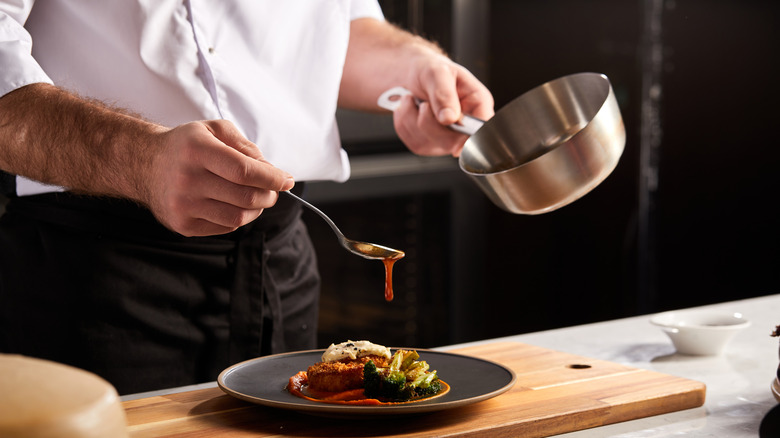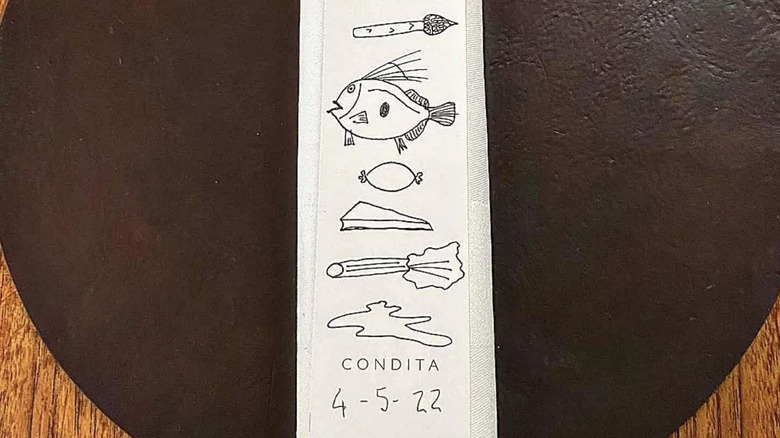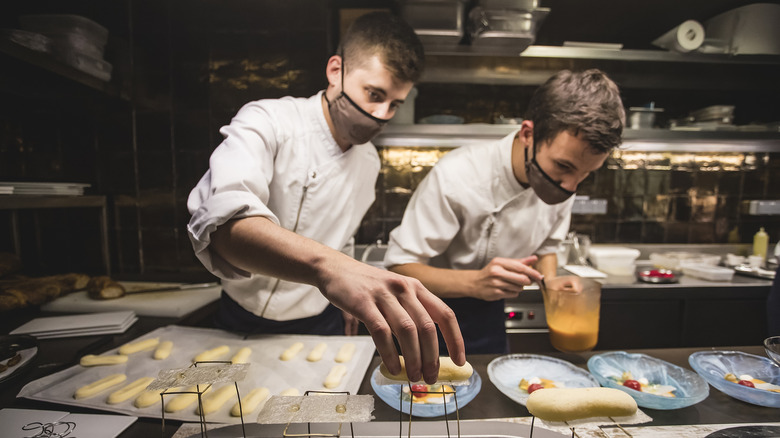Why The Tasting Menu You Previewed May Not Match What You're Actually Served
The history of Western tasting menus — a multitude of small plates presented to diners — can be traced back to medieval times when up to 25 dishes would fill tables with a collection of plates and ingredients. The 1970 movement French nouvelle cuisine saw chefs dictating guests' choices and shifting the role between diner and chef with "menu dégustation," a phrase that can be translated into "tasting menu."
Chefs would present six to eight-course menus to diners who could afford not only the luxury of time to sit and wait for elaborately prepared courses but also the money to pay for the special service.
At some establishments, tasting menus have become closely associated with theatrics, as diners are sat in front of the chef and can watch staff plate dishes to serve. While some tasting menus can be robust and trying, other restauranteurs have sought to create more manageable and affordable tasting menu experiences.
However, the photos of dishes you've seen circulating online may not match what you're served when you visit the same establishment. To participate in a tasting menu, be prepared to surrender to the choices of the chefs.
When uncertainty leads to unforgettable experiences
Many ambitious restauranteurs and chefs embrace the format of tasting menus and the ability to get creative in the kitchen. "The skill of a chef is that we can work with what we find," Robbins told Williamsburg Winery. Meanwhile, guests get to experience something unique, an experience that may or may not be repeated.
At Edinburgh's Condita, tasting menus are a complete surprise, and diners are not given any indication of the dishes to be served — except for drawings of ingredients. Chef Conor Toomey's unique approach has earned the establishment a Michelin star, and while guests sit at candlelit tables, they can ponder the small illustrations to try to guess what will be served that evening.
While past diners may have feasted upon dishes made with mackerel, crab, dehydrated turnips, and roast suckling piglet, you may or may not be treated to similar dishes during your visit. The known variables, such as the price, the three hours recommended to experience the menu, and unforgettable dishes, are the elements you can count on.
Menus in the hands of the chefs
For chefs preparing tasting menus, several upsides add to the appeal of a more flexible dining format: the chance to get creative, hone culinary skills, and perfect dishes while making use of seasonal ingredients. "We can focus on what's available, which forces us to be a little more creative and do something fresh with, say, collard greens or potatoes," Tidewater's Chef Ian Robbins told Williamsburg Winery.
While set menus offer guests choices, standard dishes require a steady source of ingredients to meet the necessary components of each recipe. For flexible tasting menus, however, any hiccups within the supply chain can be offset by chefs' decisions to use ingredients found in local markets. As a result, tasting menus help restaurants cut costs as menus can be planned according to market fluctuations and the number of guests with dinner reservations.
If you've had your heart set on a specific dish included in a restaurant's past tasting menu, be prepared that another may take its place during your dining experience.


